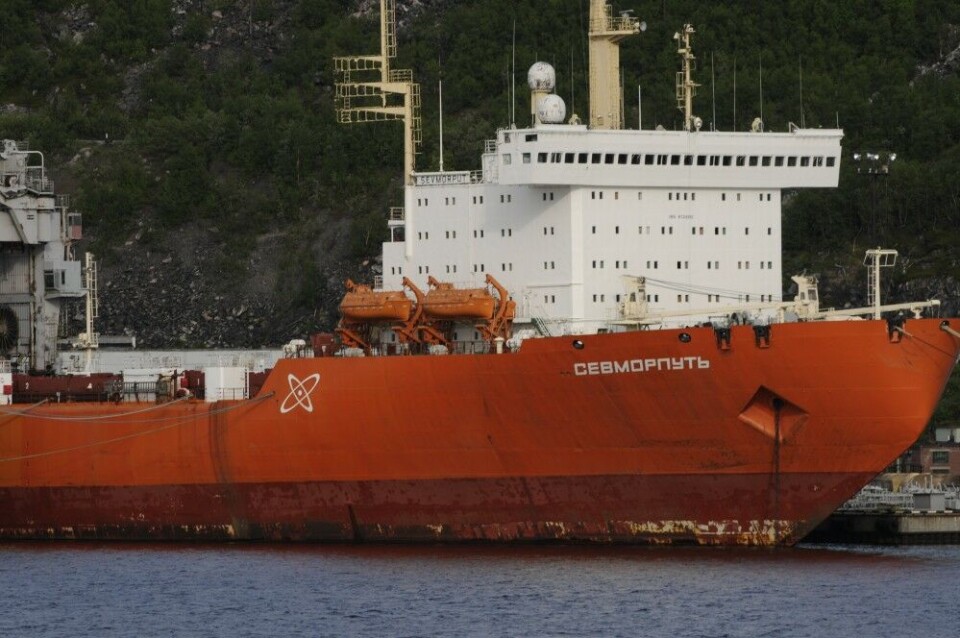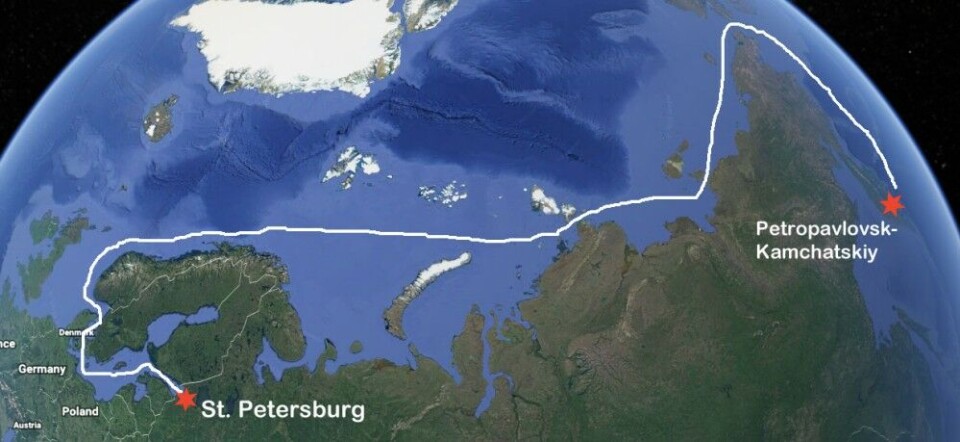
Sevmorput sails Northern Sea Route loaded to less than one-fifth of capacity
The nuclear-powered container ship is now en route from Petropavlovsk-Kamchatka to St. Petersburg with fish, after president Putin earlier this year instructed the voyage to be carried out.
Sevmorput left the port in Russia’s Far East on September 8, loaded with 206 refrigerated containers with fish, according to Rosatomflot, the state-owned operated of the vessel.
Total capacity on board, though, is 1,328 containers at a maximum weight of 36,000 tons. The fish now on its way to Russia’s European market is 6,500 tons, Rosatomflot informs. Regional news agency Kamchatka-Inform claims the cargo to be only 5,500 tons.
Sailing the nuclear-powered container vessel all across the Arctic and around Scandinavia to St. Petersburg is more of a political statement than it is a profitable business.
In May this year, president Vladimir Putin said “Okay, let’s work it out” when he discussed a possible boost in deliveries of fish from Kamchatka to the European part of the country. Deliveries by railways has previously proven a challenge due to the lack of refrigerated carriers.
Regional authorities at Kamchatka have estimated that some 50-60,000 tons of Pacific salmon could be shipped along the Northern Sea Route annually. That estimate was music in the ears for Putin, who has made it a national priority to ship at least 80 million tons of cargo per year via the Northern Sea Route by 2024.
On June 7, 2020, Putin signed the order to move on with the fish-cargo voyage.
Sevmorput is scheduled to make port call to St. Petersburg with the fish on September 25.
This is the second year in a row the 32-year old nuclear-powered cargo ship sails the Northern Sea Route with seafood. Last year, two voyages were planned, but the second was cancelled because it turned out to be less profitable than expected, The Barents Observer reported.
Dmitry Filatov, head of the cargo transport project with Rosatomflot, told Kamchatka-Inform the goal is to have four voyages with Sevmorput per season. But, as he explained, “it will be important to have other customers interested in transporting cargo along the Northern Sea Route as well, not only fishermen.”

Sevmorput was commissioned in 1988 and is powered by one reactor of the KLT-40 type, similar to the reactor onboard the icebreakers Taymyr and Vaygach.
After a 2015 upgrade and safety evaluation, the reactor’s service life was prolonged with 150,000 hours aimed at keeping Sevmorput in operation until 2024.
















